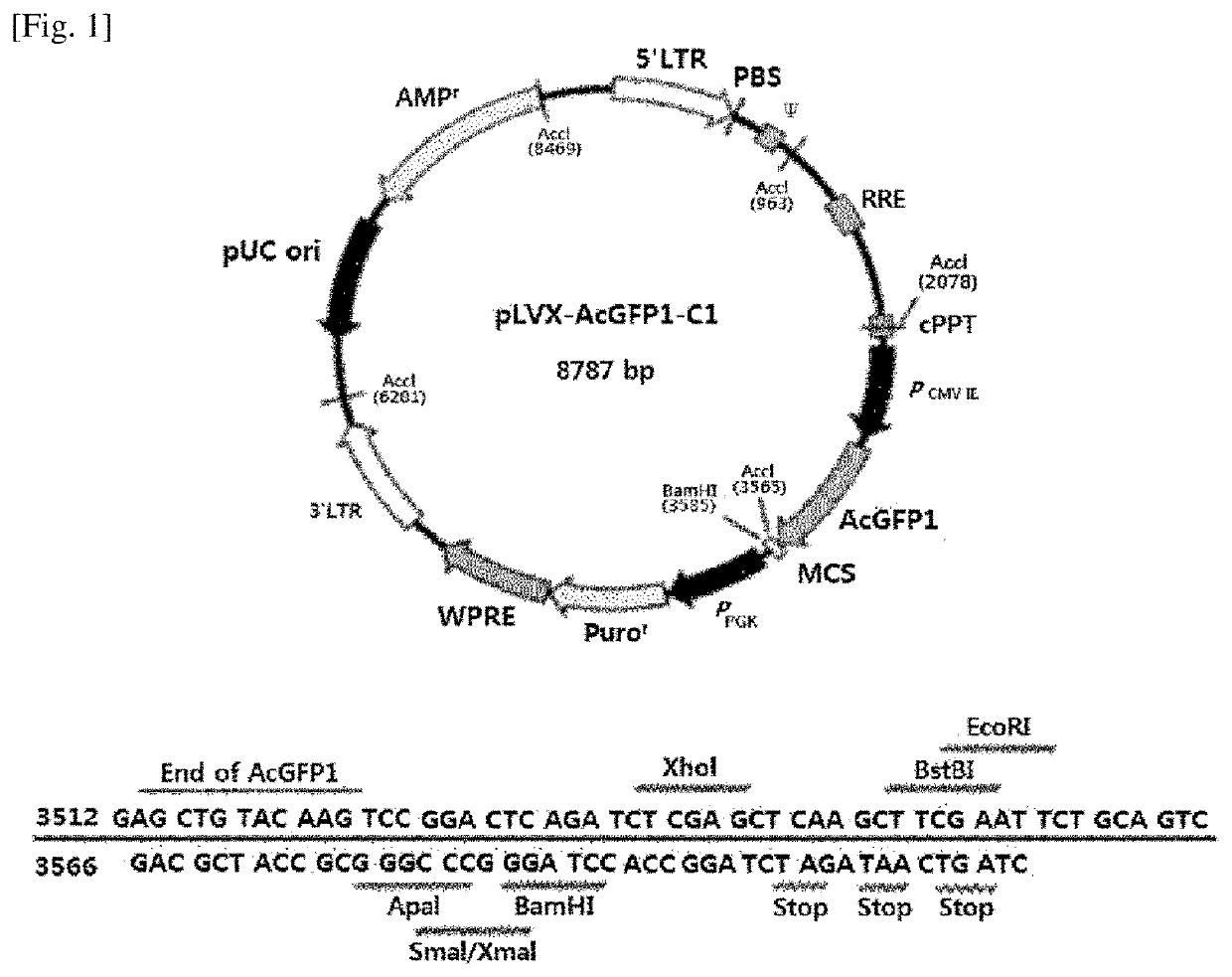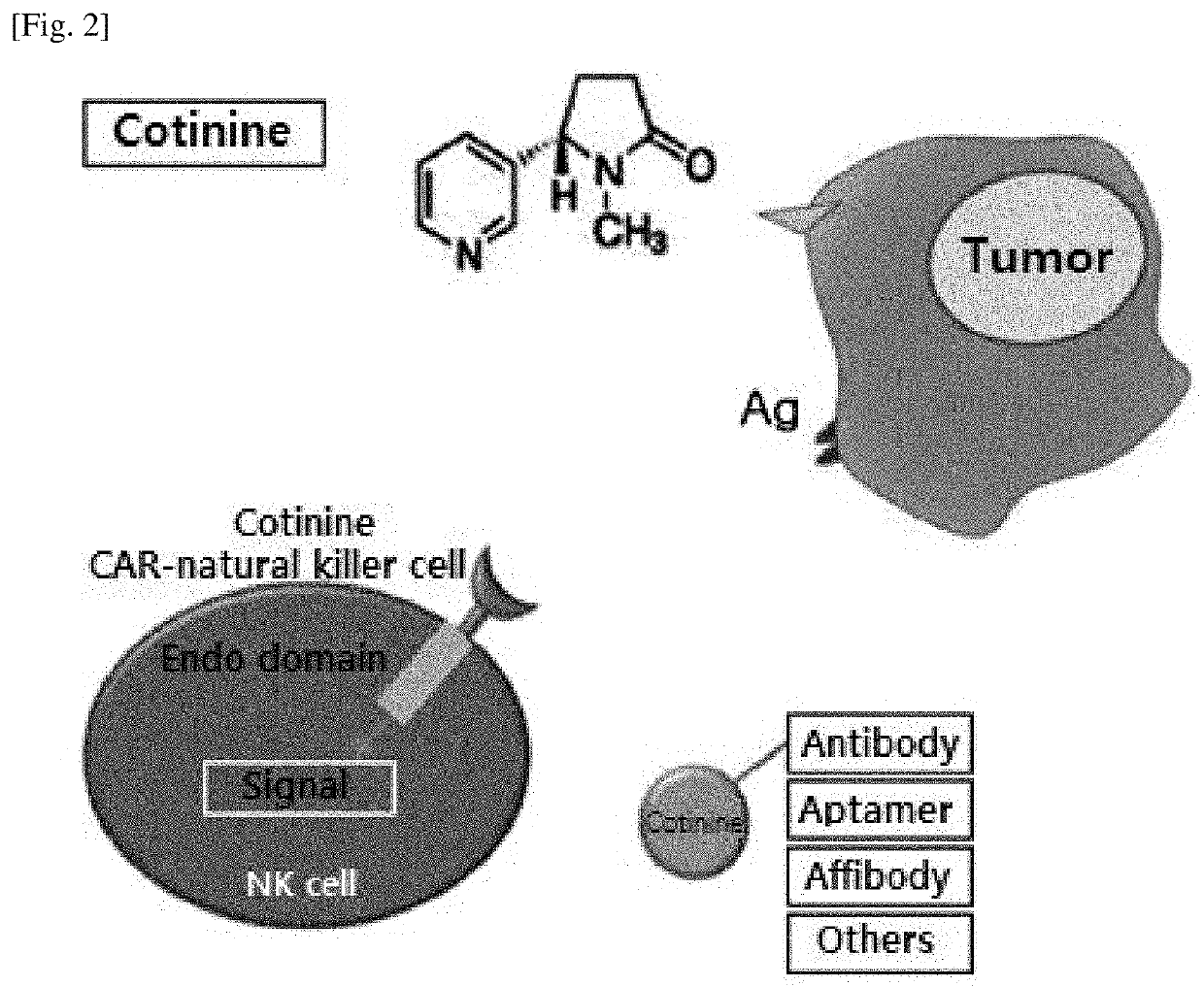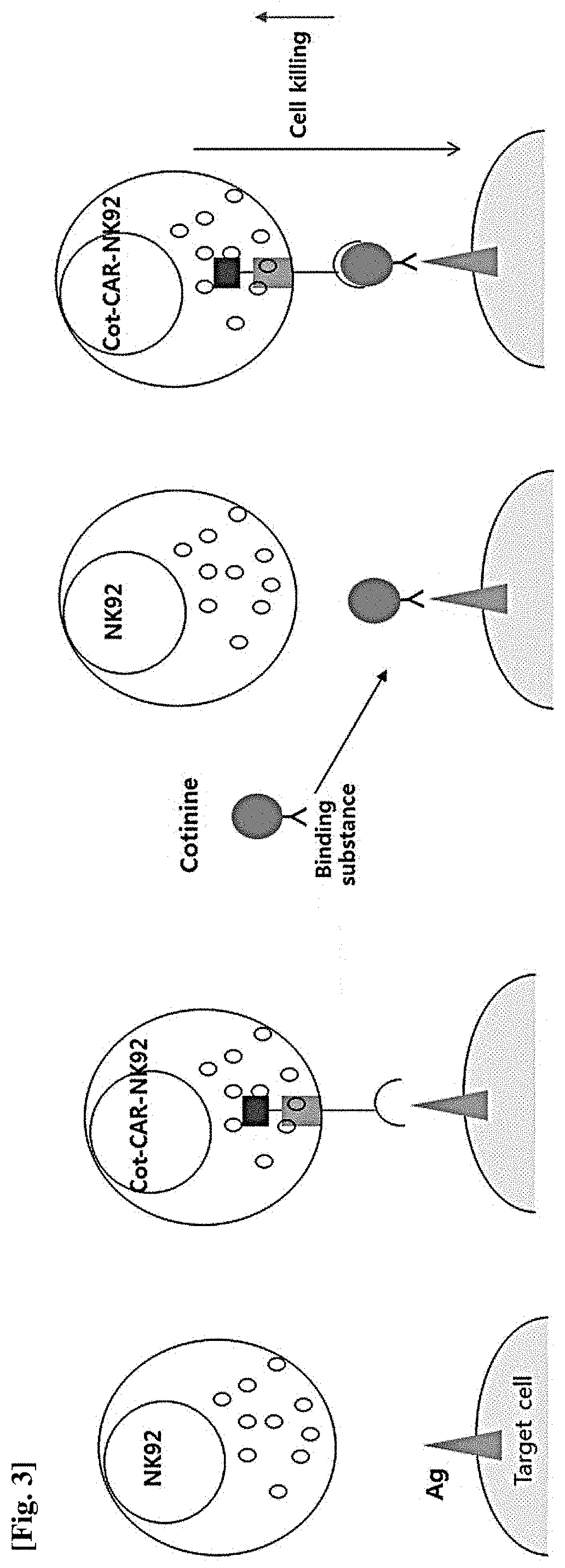Natural killer cell expressing Anti-cotinine chimeric antigen receptor
a natural killer cell and receptor technology, applied in the direction of immunoglobulins, peptides, drugs against animals/humans, etc., can solve the problems of high likelihood of recurrence, low therapeutic effect of chemotherapy, and limited range of application, and achieve high efficiency
- Summary
- Abstract
- Description
- Claims
- Application Information
AI Technical Summary
Benefits of technology
Problems solved by technology
Method used
Image
Examples
example 1
ckbone
[0094]For the vector used in the present invention, a lentiviral vector (Clontech, 632155) was used. Specifically, pLVX-AcGFP-C1 illustrated in FIG. 1 was used. The Kozak sequence (CTCGAG; n.t. 2801-2806) and AcGFP1 (Aequorea coerulescens green fluorescent protein; n.t. 2807-3604) were deleted therefrom for use in the experiment, and then XhoI and XbaI were used as a restriction enzyme. A specific related sequence is illustrated in FIG. 4.
example 2
on of Target Antigen and Cotinine Conjugate
[0095]The chemical structure of cotinine (trans-4-cotininecarboxylic acid), which is a small molecule substance to be used as a target antigen, is shown in the following Formula 1. Cotinine purchased from Sigma-Aldrich was used.
[0096]In addition, a conjugate in which cotinine and a binding substance are fused was prepared by the following method.
[0097]Specifically, for an HER2-cotinine conjugate, a conjugate in which cotinine and an anti-HER2 antibody are conjugated was prepared using Trastuzumab (Genentech, USA) which is the anti-HER2 antibody. Here, the conjugate was conjugated by the 1-ethyl-3-[3-dimethylaminopropyl]carbodiimide (EDC) coupling method. First, the anti-HER2 antibody was prepared by being dissolved in PBS to a concentration of 25 μM. On the other hand, trans-4-cotininecarboxylic acid (Sigma-Aldrich) was prepared by being dissolved in 1 ml of MES buffer [0.1 M 2-[morpholino]ethane sulfonic acid (MES) and 0.5 M sodium chlorid...
example 3
nine Chimeric Antigen Receptor
[0100]A plasmid containing a nucleic acid which codes for each of the domains of a chimeric antigen receptor that specifically binds to cotinine of the present invention was prepared by the following method.
[0102]Based on the human T-cell surface glycoprotein CD8 alpha chain (GenBank: AK300089.1), polymerase chain reaction was performed using two types of primers (forward primer: SEQ ID NO: 18, reverse primer: SEQ ID NO: 19) respectively containing restriction enzyme sites of XhoI and SfiI, and then cloning was performed.
[0103](2) Target Specific Recognition Domain—scFv
[0104]As an antigen binding domain capable of specifically binding to cotinine, an anti-cotinine chimeric antibody or an antibody fragment thereof was intended to be obtained. For the sequence of ScFv, reference was made to information related to ScFv in Korean Patent No. 10-1648960. Specifically, the antigen binding domain includes the nucleotide sequence represen...
PUM
| Property | Measurement | Unit |
|---|---|---|
| concentration | aaaaa | aaaaa |
| concentrations | aaaaa | aaaaa |
| concentrations | aaaaa | aaaaa |
Abstract
Description
Claims
Application Information
 Login to View More
Login to View More - R&D
- Intellectual Property
- Life Sciences
- Materials
- Tech Scout
- Unparalleled Data Quality
- Higher Quality Content
- 60% Fewer Hallucinations
Browse by: Latest US Patents, China's latest patents, Technical Efficacy Thesaurus, Application Domain, Technology Topic, Popular Technical Reports.
© 2025 PatSnap. All rights reserved.Legal|Privacy policy|Modern Slavery Act Transparency Statement|Sitemap|About US| Contact US: help@patsnap.com



